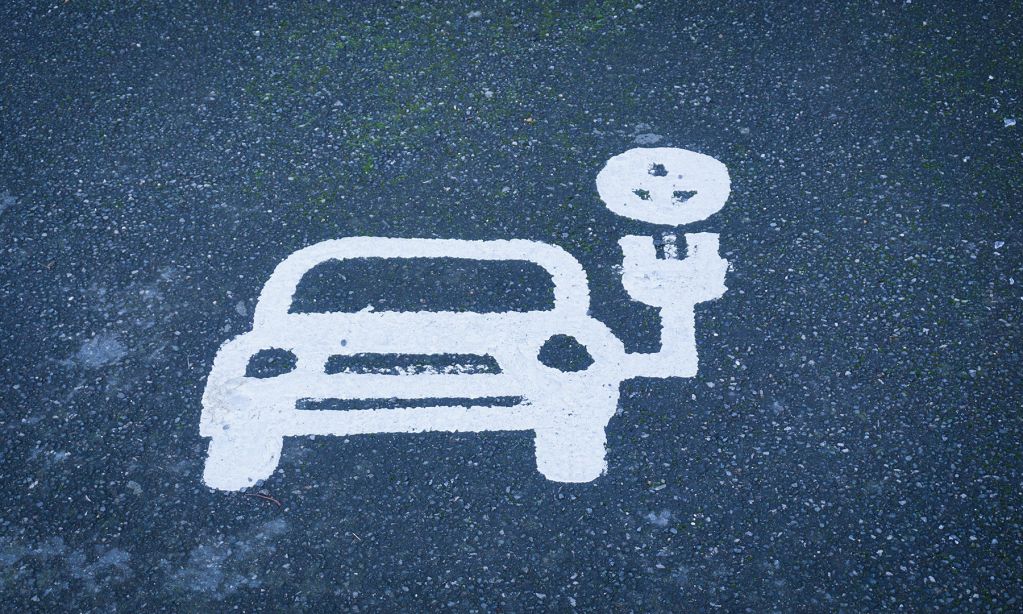It’s almost certain the federal government will soon announce supplementary tariffs on imports of China-made electric vehicles (EVs). There is remarkable agreement among former conservative trade advisors, libertarian think-tanks, environmental groups and labour unions that this is a good idea.
The major questions seem to be how high the tariffs will be, what other restrictions Canada might impose on Chinese investment in North American automotive supply chains, and what conditions we should impose on the auto-makers themselves to speed up the North American EV transition.
At the end of June, Finance Minister Chrystia Freeland launched a month-long consultation on actions the Canadian government could take to respond to “unfair Chinese trade practices” benefitting that country’s EV manufacturers. On the menu of policy options are a surtax (tariff) on imported Chinese EVs, the removal of China-made vehicles from a federal consumer rebate program, and restrictions on Chinese investment in Canada’s automotive supply chain.
The Trudeau government’s EV consultation responds to concerns among Canadian auto workers and manufacturers that the sudden availability in Canada of relatively cheap, top-of-the-line Chinese EVs would significantly threaten jobs and the viability of Canada’s EV transition.
Canada doesn’t currently import any Chinese brand EVs. But a bump in Canadian imports of Tesla Model Y vehicles from the U.S. company’s Shanghai factory between 2022 and 2023 sparked questions about whether Canada was prepared for a bigger surge—and the effect that might have on efforts to promote domestic manufacturing of EV batteries, parts and the vehicles themselves.
There is remarkable agreement out there that Canada should be proactive. Conservative leader Pierre Poilievre last week called for 100 per cent tariffs on Chinese EVs, 50 per cent tariffs on semiconductors and solar panels, and other trade restrictions on batteries, aluminum and steel.
China's goal, Poilievre suggested unconvincingly, is "crushing our steel, our aluminum, and our automotive production, and taking our jobs away." It was a variation on Freeland's assertions about China's "state-directed policy of overcapacity." The rhetoric from both parties is silly given the good reasons to impose temporary safeguard measures in all these sectors.
Chinese subsidies and automaker strategies
A recently closed European Commission investigation found extensive subsidization across the Chinese EV supply chain—prompting the application of provisional countervailing duties between 17 and 38 per cent on electric vehicles imported into Europe. The subsidy investigation was triggered by similar concerns about ensuring a "level playing field" for European-made EVs, which are slowly but steadily losing market share to Chinese brands.
Europe’s eight-month investigation found extensive subsidization and other state support across the entire Chinese EV supply chain—from mining through aluminum smelting, to battery and car assembly, and even the shipment of EVs to foreign destinations. The EU study was based on surveys of most major China-based producers of EVs, including industry leader BYD, Geely, SAIC and European and U.S. companies that assemble vehicles in China. Still, as you'd expect, China has officially complained about the countervailing duties to the World Trade Organization.
The success of China’s EV market isn’t all down to state financial support, as generous and stable as it is. Creative federal, provincial and municipal policies, and rigorous competition for consumers, which has driven down prices, played a role as well. Beijing and other cities issued normally expensive licence plates for free if you owned an EV. Charging network pilot projects going back to 2012, and mandated interoperability (so that any vehicle can charge at any point in the network), have also paid off.
As have the economies of scale that come naturally in the automotive sector from efficiency gains over time. Unifor’s submission to Canada’s EV consultation is excellent on this point and on the spillover effects in global markets of China’s efforts to achieve self-sufficiency in high technology products.
Labour standards
Canada, the U.S. and European nations are also handsomely subsidizing their EV sectors. But, as Unifor points out, EV manufacturers in China (whether Chinese or international brands) also benefit from vastly lower costs of production through wage suppression and restrictions on worker organizing, not to mention well-documented allegations of forced labour in the EV supply chain and availability of cheap coal-fired electricity.
The labour violations are serious and undercut arguments in North America that we should be welcoming an influx of cheap EVs to more rapidly reduce emissions from the transportation sector. According to a Human Rights Watch report from earlier this year, large amounts of the aluminum used in EV supply chains in China was almost certainly produced using forced labour in China’s Xinjiang Uyghur Autonomous Region.
Canada is required by law, under CUSMA, to block imports of products made using forced labour. I discussed the labour rights violations in EV supply chains with CBC Radio in June when Canada's consultations were announced.
Pressure from the U.S.
The debate about China’s dominance across the EV supply chain grew louder after the Biden administration announced in May that it would be raising protective tariffs on a number of Chinese-made products under Section 301 of the U.S. Trade Act. The administration continues to review comments on those plans and is expected to announce final tariff levels later this month.
Biden has proposed to raise the current 25 per cent tariff on Chinese EVs to a nearly prohibitive 101 per cent, and the tariff on EV battery tariffs to 25 per cent from the current 7.5 per cent. (I say nearly prohibitive because several cheaper BYD models would be competitive in the U.S. even if their price were doubled.) Tariffs will also go up on some solar products, semiconductors, steel and aluminum, shipping cranes and some medical products.
These additional trade protections for the U.S. manufacturers put pressure on Canada and Mexico to follow suit or risk future trade actions directed at them. An immediate concern in the U.S. is the transshipment of Chinese-made products through America’s top two trading partners to avoid U.S. tariffs, as minimally processed inputs assembled in Mexico, for example, would be covered by the preferential tariffs in CUSMA. This is a bigger concern for the U.S. in Mexico than in Canada.
On July 9, the U.S. announced an agreement with Mexico under which steel and aluminum exported into the U.S. will face 25 per cent and 10 per cent tariffs, respectively, if the steel was not melted and poured in North America or if the aluminum was smelted in China, Russia, Belarus or Iran.
These measures, which directly address transshipments of Chinese steel and aluminum through Mexico, were welcomed by workers and U.S. industry worried about Chinese overproduction of essential industrial inputs that North American facilities can supply, often with a smaller environmental footprint. The Canadian Steel Producers Association and Aluminum Association of Canada want Canada to reciprocate with similar tariffs on Chinese imports.
In a new report, the United States Trade Representative says it expects China's dominance in the EV sector to feature prominently in the mandatory review of the Canada-U.S.-Mexico (CUSMA) agreement in 2026. Whether it is a Democrat or Republican in the White House at that time, we can expect the U.S. to press its neighbours for stricter automotive rules-of-origin (e.g., minimum North American content levels to qualify for tariff-free treatment) and closer coordination on questions of foreign investment in the automotive sector.
Generally, North American governments should be thinking very hard about how to effectively ensure more of the EV supply chain is derived domestically, as this will ensure the survival of auto jobs in the transition from internal combustion engine vehicle manufacturing.
Trade and Investment Research Project (TIRP) associate Angelo Di Caro, director of research for Unifor, has some ideas for how our governments should go about that in this article, which is drawn from a CCPA collaboration on the upcoming CUSMA review. We have since translated that report into Spanish and French thanks to generation support from several TIRP member organizations.
Near consensus on Canadian tariffs
Canada has put significant public resources into attracting EV battery manufacturing and other so-called clean technology investments to Canada. A lot of this money comes with strings attached, including prevailing wage conditions.
Chinese automakers do not have to meet these same conditions, nor do they currently have any production footprint in North America, though BYD, which produces electric buses for municipal transit systems in both Canada and the United States, is apparently eyeing an entry.
There is substantial political, labour and automotive sector agreement in Canada that an open-door policy for imports of low-priced, highly competitive and highly subsidized Chinese EVs would harm the North American automotive sector's electrification plans. Unifor and the Canadian Labour Congress support a surtax on finished EVs, batteries and other inputs from China. Unifor argues that these should match U.S. levels.
Flavio Volpe of Automotive Parts Manufacturers' Association believes tariffs are imminent. Freeland said this week a decision should be coming “soon.” Canada will likely wait to see the final tariff levels in the U.S. before making that announcement. It’s clear enough by now the plan is to move in tandem with the U.S. rather than follow the European approach.
Environmental Defence's submission to the same consultation is more critical of the North American auto sector for dragging its feet on the EV transition, but also recognizes the need for temporary protection:
If Canada is making the choice of shutting out competition and not allowing the market to drive down electric vehicle prices, there needs to be a plan for the government to step up with its own industrial strategy to achieve a “made-in-Canada” affordable EV. There are many places Canada could start, from policies designed to build-up a healthy used EV market, to reforming consumer incentives and even adding affordability conditions to the subsidies we are giving automakers.
That seems reasonable. EV takeup in North America is growing but unevenly, based in part on consumer concerns about the high price of EVs and the slow buildout of charging infrastructure in some states and provinces.
Canadian tariffs on China-made EVs are unlikely to slow down the EV transition in North America. Nor will they necessarily speed it up. But protective trade barriers and investment restrictions, while likely inevitable due to external and internal pressures on the Trudeau government, would be a waste without if they don’t result in an EV supply chain as productive, and vehicles as varied, as in China or Europe.
The House of Commons trade committee has come off summer break early to consider all of this starting Wednesday, August 21. With the possibility that the U.S. will again delay a final determination on protective tariffs on China-made goods, there may still be time to affect how Canada plays this.







